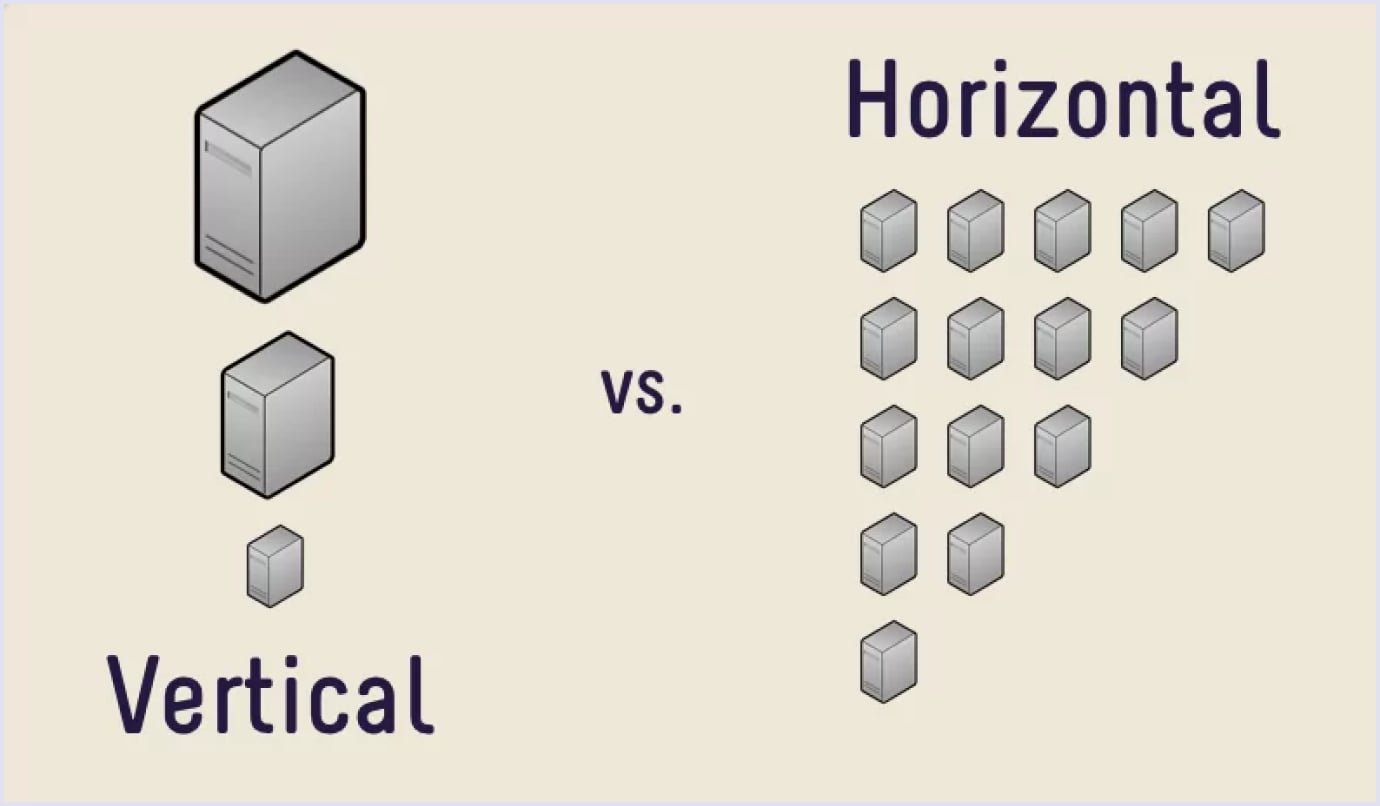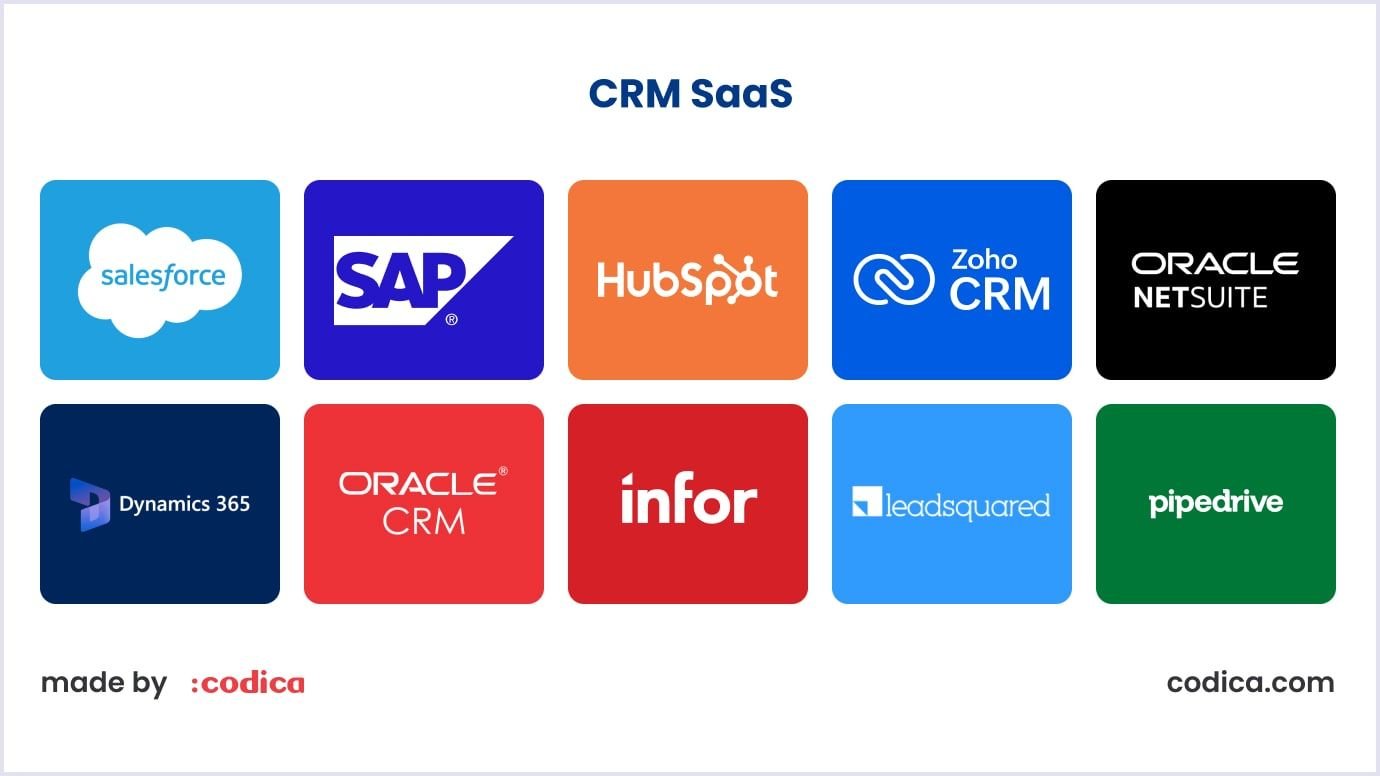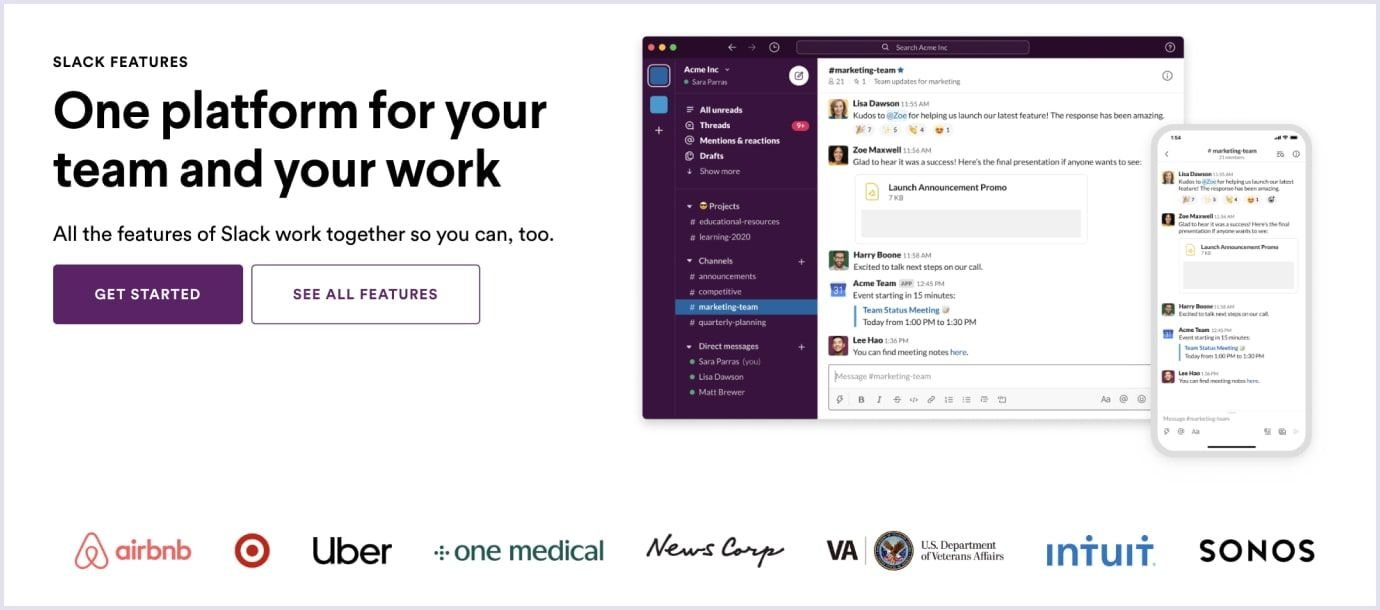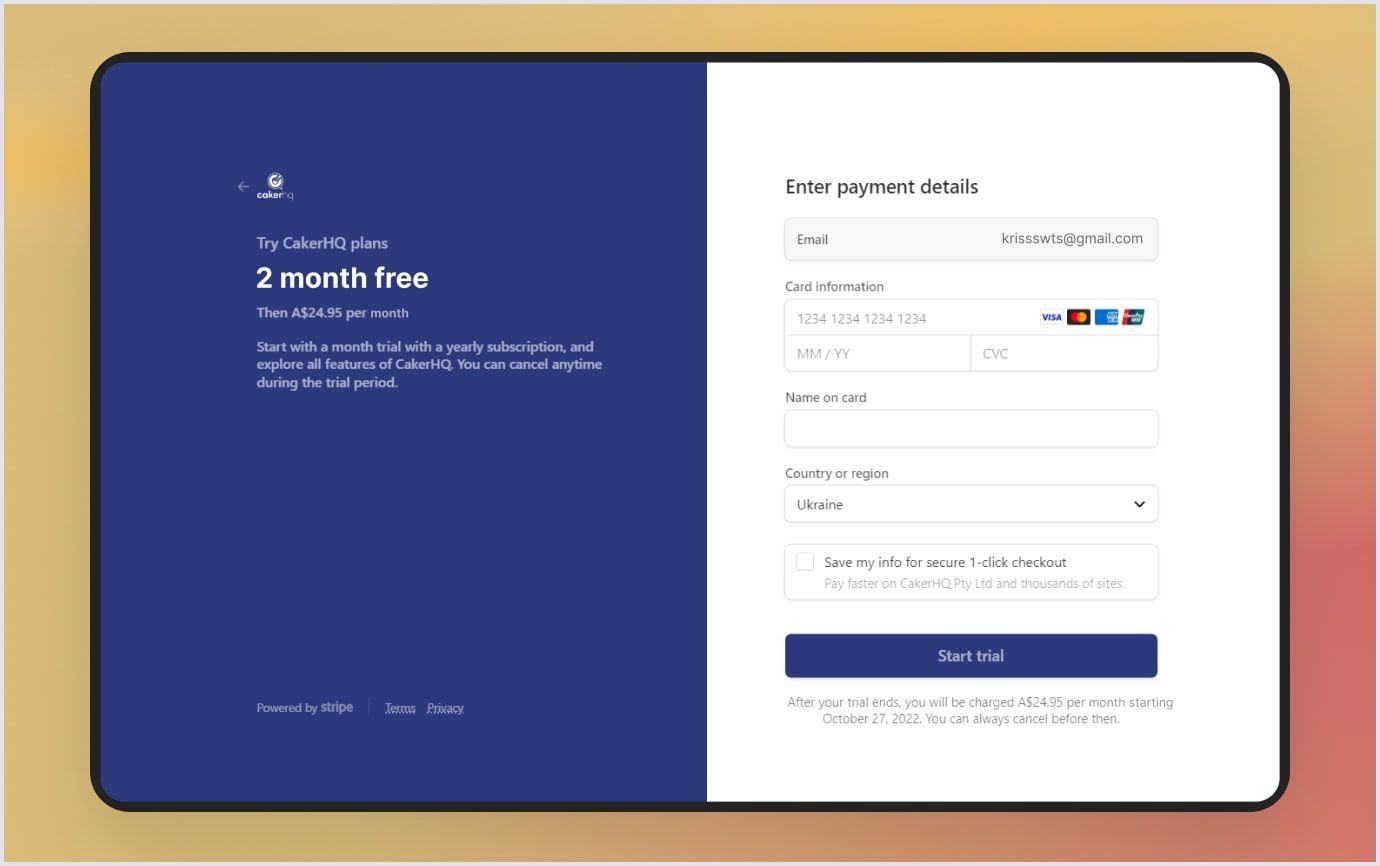Understanding different types of software as a service (SaaS) products is as crucial as knowing how to build a SaaS product. In layman’s terms, there are many types, all with a specific purpose and specialization. So, in this piece, we’ll zoom in on various types of SaaS applications, overviewing them and identifying their purpose.
To begin with, there are two primary SaaS categories, horizontal and vertical, with even more subcategories or niches.
While horizontal SaaS currently dominates the market, vertical SaaS companies are gaining prominence by addressing specific pain points within their respective industries. Let’s begin by defining them first, outlining the clear benefits each of them brings.
Vertical SaaS
These solutions are crafted to address the distinct needs of specific industries or business functions, targeting industry-specific challenges by offering customized solutions to fulfill individual requirements.
Prominent vertical SaaS products include Epic (healthcare software), Lawmatics (legal practice management software), Buildium (property management software), and many others. These solutions cater to niche markets and are used by businesses in specialized industries to enhance operations and achieve a competitive advantage through optimization.
Horizontal SaaS
Unlike vertical-oriented, horizontal SaaS solutions usually serve multiple industries and functions, prioritizing scalability, user-friendliness, and customization to meet diverse customer requirements.
These solutions are typically generic applications that cover broad audiences and, thus, provide extensive functionality for various needs. Some popular SaaS products in this category include Slack for team communication, Salesforce for customer relationship management (CRM), and Mailchimp for email marketing, among others. They streamline operations and boost efficiency regardless of the industry and the size of the venture.

Customer relationship management (CRM) SaaS
A CRM system fosters thoughtful relationships between customers and businesses. Therefore, it’s an indispensable component within any business's operational framework. It helps companies monitor and analyze customer data, including purchasing behaviors, enabling them to tailor their marketing strategies accordingly.
Beyond their feature-rich offerings, these leading CRM solutions also play a vital role in streamlining operations by facilitating seamless communication among teams and departments. Moreover, they aid in assessing funnel performance, providing comprehensive analytical insights into key performance metrics.
Speaking of examples, the CRM market is dominated by five major players, including Salesforce, Microsoft Dynamics 365, Hubspot, Zoho CRM, and Pipedrive. These platforms offer robust enterprise-level functionalities, facilitating tasks such as creating contact groups, sharing vital documents, and securely storing customer information.

Accounting SaaS
These platforms enable businesses to securely store their financial data and access their accounts from any internet-connected device. For instance, businesses can utilize features such as automatic invoicing reminders and linked banking accounts to expedite bill payments effortlessly. By automating accounting tasks, businesses can improve accuracy in financial records and streamline workflows, ultimately leading to heightened productivity.
Ultimately, these solutions boost collaboration, provide fresh data insights, simplify regulatory aspects of business, and more.
The top contenders in this field are Xero, FreshBooks, Zoho Books, Sage 50 (formerly Peachtree), and QuickBooks. Each platform offers powerful tools tailored to streamline financial operations and bolster control over finances and workflows.

Content management system (CMS) SaaS
CMS solutions generally facilitate the creation and modification of digital content. Thus, CMS caters to a broad spectrum of users, from individual bloggers to large corporations, enabling them to efficiently manage various types of content, including text, images, videos, and audio files. The widespread popularity of CMS stems from its user-friendly interface, which requires minimal technical expertise or coding skills, rendering it accessible to individuals with basic computer literacy.
Moreover, CMS platforms offer a plethora of built-in functionalities that would otherwise necessitate manual coding efforts. These functionalities include providing user access levels, automated backups, analytics tracking, and permissions control.
To list a few examples, there are products like WordPress, Joomla, Drupal, Magento, and Wix. For instance, WordPress is renowned for its open-source nature, ease of use, and extensive customization options.
Enterprise resource planning (ERP) SaaS
These systems simplify various operational tasks, including inventory and order management, scheduling operations, managing customer relationships, handling enterprise resources, and performing financial accounting duties.
ERP systems offer real-time insights into performance metrics, allowing businesses to accelerate response times to customer requests and reduce manual data entry requirements through digital storage.
Furthermore, ERP systems facilitate the generation of custom reports tailored to specific sectors or departments within an organization, empowering executives with comprehensive insights into operational status and areas for potential improvement.
The most common examples of this software type include SAP, Oracle, Microsoft Dynamics, Infor, and Workday. Notably, some tools, such as Microsoft Dynamics, span multiple categories, aiming to provide comprehensive solutions as a "one-stop service" for businesses, eliminating the need for multiple vendors.

Project management SaaS applications
Essentially, project management (PM) software is crucial for organizations to efficiently plan, execute, and oversee projects. This type of software establishes productive workflows and promotes accountability among team members. After all, they contribute to enhanced efficiency within teams.
Despite you may be familiar with this software, learning from the examples won’t hurt. Hence, the leading names in PM tools include Asana, Trello, Monday.com, and Jira. Collectively, these tools assist business owners and managers in effectively overseeing their teams and projects. Notably, the primary distinguishing factor among these tools lies in their user interface, catering to the preferences of individual users or organizations.

Communication SaaS applications
This type of SaaS solution offers convenient online communication tools that enable colleagues, students, and teams to interact seamlessly, regardless of their physical location.
A prime example of SaaS is Slack, a widely used messaging platform facilitating real-time communication through channels, direct messages, and integrations with productivity tools. It centralizes collaboration, allowing team members to share ideas, files, and updates, thereby enhancing workflow transparency and efficiency.

Additionally, Zoom is a prominent SaaS communication tool renowned for its video conferencing capabilities. It enables easy conduct of virtual meetings, webinars, and training sessions, offering features like screen sharing, recording, and interactive whiteboarding. Zoom ensures teams remain connected and productive, regardless of remote work or different time zones.
Human resources (HR) SaaS applications
Primarily, HR SaaS software provides cloud-based services that empower organizations to manage their employee data efficiently, thereby establishing a streamlined HR process spanning from recruitment to retirement. This not only saves time but also minimizes administrative costs typically associated with traditional HR management methods.
HR SaaS are all-in-one solution packages encompassing various facets of an organization's recruitment endeavors, ongoing performance management, and professional development initiatives. Moreover, these solutions seamlessly integrate with third-party systems for payroll or other software providers.
Speaking of examples, there are several noteworthy ones, such as Workday, Zoho People, ADP, SAP, BambooHR, and FactoHR.
Ecommerce SaaS platforms
For new businesses in ecommerce, opting for SaaS solutions presents a compelling choice. They enable swift initiation of product sales while circumventing the expenses associated with website development and UX/UI design services.
The most prominent example, Shopify, offers a plethora of features tailored to facilitate online sales for entrepreneurs. Firstly, it boasts a diverse array of themes to lend a unique aesthetic to your online store. Secondly, Shopify integrates seamlessly with various payment processing systems like POS and PayPal, streamlining transactions for both merchants and customers. Furthermore, Shopify empowers businesses to generate financial reports and even incorporate blogs into their websites, offering a comprehensive solution for diverse business needs.
Payment gateways and billing SaaS solutions
In various businesses, implementing different monetization models is a commonplace practice. Thus, to collect, process, and handle all payments, there are SaaS payment gateways and billing solutions. They streamline the acceptance of payments for businesses, handling numerous transactions daily.
One of the most notable examples is Stripe. It securely stores sensitive customer data like card numbers, providing a convenient payment solution that safeguards information between banks and merchants, reducing data breach risks.
Moreover, payment gateways expedite online transaction processing compared to manual methods. Leveraging Stripe’s extensive user base enhances the potential to attract new clients.
In CakerHQ, a SaaS platform for bakery business our team developed, we had to implement the payment functionality. Among all the choices, Stripe was an obvious one, providing its efficiency, lightning-fast transactions, and ease of use.

With Stripe’s help, we created a performing, fast SaaS solution in which all parts work like clockwork. Thus, today, CakerHQ is one of the best platforms for cake makers in Australia, allowing people all over the continent to find any sweet treat for their occasion.
Bottom line
As you can see, SaaS solutions have solid ground on the market. They are always in demand and regularly offer something new. In addition to being performant and unpretentious, they are flexible and handy.
So, if you’ve read to this point, remember that opting for SaaS development services is a great idea. However, it requires careful planning and effective implementation. Therefore, it is OK not to know where to start. In this regard, we can always show you the way. Thus, contact us, and our expert team would be glad to assess your idea and help you develop it.
